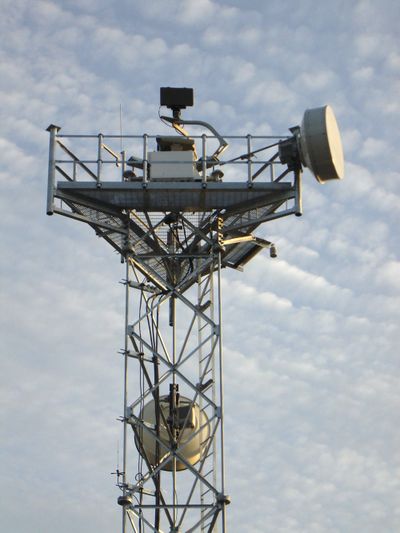Glitches, delays plague virtual fence at border

PHOENIX – An ambitious, $6.7 billion government project to secure nearly the entire Mexican border with a “virtual fence” of cameras, ground sensors and radar is in jeopardy after a string of technical glitches and delays.
Having spent $672 million so far with little to show for it, Washington has ordered a reassessment of the whole idea. The outlook became gloomier this week when President Barack Obama proposed cutting $189 million from the venture.
Ultimately, the project could be scaled back dramatically, with the government installing virtual fences along a few segments of the nation’s 2,000-mile southern boundary but dropping plans for any further expansion, officials said.
“The worst that happens is that we have a system which gives us some value but we conclude that it’s not worth buying any more of it,” said Mark Borkowski, the government’s director of the project at U.S. Customs and Border Protection.
The first permanent segment of virtual fence – a 23-mile stretch near Sasabe, Ariz. – was supposed to be turned over to the Border Patrol by the main contractor, Boeing Co., for testing in January, but the hand-over has been delayed by problems involving the video recording equipment.
The Bush administration launched the project in 2005 to help secure the border against illegal immigrants, drug smugglers and other intruders.
The system was supposed to let a small number of dispatchers watch the border on a computer monitor, zoom in with cameras to see people crossing, and decide whether to send Border Patrol agents to the scene. Although there are sensors, cameras and radar at many points along the border, they are not connected to cover large expanses.
Originally, the virtual fence was supposed to be completed by 2011; that date has slipped to 2014, largely because of technical problems.
Among other things, the radar system had trouble distinguishing between vegetation and people when it was windy. Also, the satellite communication system took too long to relay information in the field to a command center.
The Homeland Security Department and Boeing said the early problems were fixed, but other glitches keep popping up. The latest: a software bug that causes video recording devices to lock on to the wrong cameras.
The government is trying to negotiate a deal with Boeing to let the Border Patrol begin using the first permanent stretch of virtual fence at night while the contractor is still working on it.
In ordering a reassessment of the project on Jan. 8, Homeland Security Secretary Janet Napolitano said that the delays were unacceptable.